
Can YouTube detect fake likes?
Just as Sherlock Holmes had an uncanny ability to detect even the most cunningly disguised clues, you might wonder if YouTube, with its sophisticated algorithms, can detect the digital equivalent of a fake disguise: artificial likes.
You’ve probably heard about the rampant usage of fake likes and views on the platform, and may have even been tempted to boost your own content’s popularity artificially.
But does YouTube have the technological prowess to discern these artificial engagements from genuine ones?
The answer may be more complex than you think, involving a myriad of factors and considerations that we’re about to explore.
Key Takeaways
- YouTube’s algorithms are designed to detect and flag potential fake engagement, such as sudden spikes in likes or multiple likes from a single source.
- Authentic engagement is crucial for accurately evaluating the success of content and should be the focus for creators.
- Artificial engagement, such as fake likes, undermines the integrity of YouTube channels, misrepresents content popularity, and can lead to consequences like channel termination or loss of trust from the audience.
- Detecting fake interactions can be done through user behavior analytics, content authenticity checks, monitoring likes-to-comments ratio, and identifying signs of bot-generated likes. YouTube is committed to promoting authentic engagement and has strict guidelines to deter deceptive tactics.
Understanding YouTube’s Algorithms
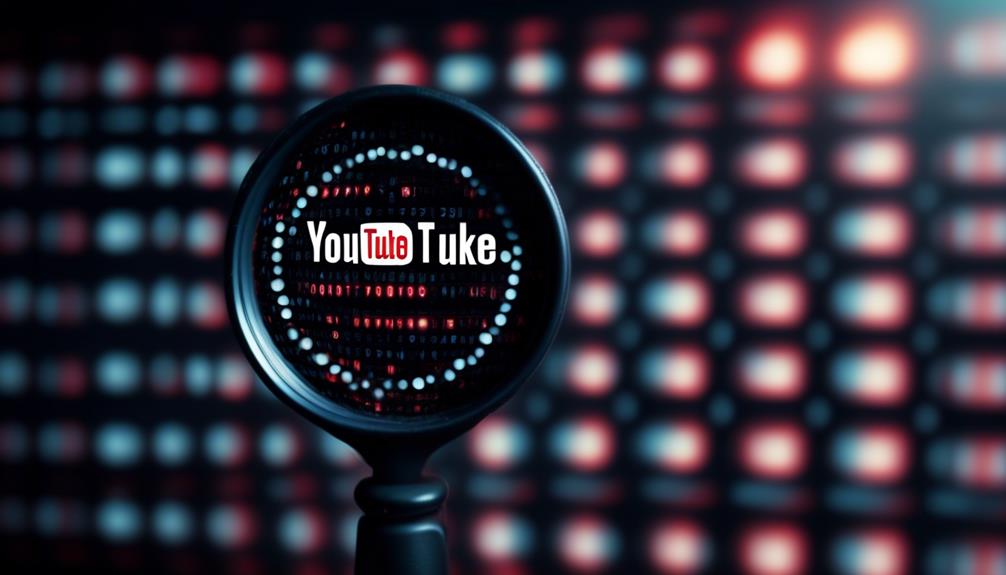
To fully grasp how YouTube can detect fake likes, you need to delve into the complex world of YouTube’s algorithms. These intricate systems are designed with algorithm transparency in mind, ensuring the process is clear and fair for all users. They’re not as enigmatic as you might think. In fact, they’re constantly learning and evolving, using a vast array of data to determine the authenticity of interactions.
YouTube’s algorithms use a multifaceted approach to detect anomalies. This could be a sudden influx of likes from a single IP address, or a surge of likes on a video that isn’t getting many views. They’re incredibly precise, adept at distinguishing genuine interactions from those that are artificially created.
Moreover, these algorithms play a crucial role in video recommendation. They analyze your watch history, liked videos, and search queries to suggest content that aligns with your preferences. However, when fake likes are involved, this system’s integrity is at stake. It’s like feeding false information into a sophisticated machine. It hampers its ability to offer you content that genuinely piques your interest.
The Importance of Authentic Engagement
You must understand the significance of genuine user interactions on YouTube. False engagement, such as fake likes, can distort the actual impact of your content and mislead your growth strategy.
Therefore, recognizing and focusing on authentic engagement is crucial for the accurate evaluation of your content’s success.
Identifying Genuine User Interactions
Understanding genuine user interactions is crucial as it paves the way for authentic engagement, a cornerstone for any successful YouTube channel. Leveraging user behavior analytics and conducting content authenticity checks can significantly aid in identifying true interactions.
Here’s a quick guide:
| User Behavior Analytics | Content Authenticity Checks | Outcome |
|---|---|---|
| Examines patterns, trends | Analyzes video, comments for originality | High-quality engagement |
| Identifies anomalies, fake interactions | Spot-checks for duplicated content | Reduced spam, fake likes |
| Monitors user engagement over time | Verifies user profiles, check for bots | Sustainable growth |
Impact of Artificial Engagement
Artificial engagement, a deceptive practice that undermines the integrity of YouTube channels, can significantly dilute the value of authentic interactions and hamper the channel’s organic growth. This artificiality in engagement poses a serious challenge to Social Media Ethics.
- Misrepresentation of content popularity
- Erosion of viewer trust
- Unfair advantage in monetization
Artificial Intelligence in Engagement Detection is now a necessity to combat this menace. As YouTube strives to foster innovation, it’s critical that your engagement remains authentic. AI can weed out fake likes, but it’s your responsibility to maintain ethical standards. Don’t compromise your channel’s growth and audience trust for short-term gains. Genuine interactions are the lifeblood of your channel’s sustainable growth.
The Concept of Fake Likes
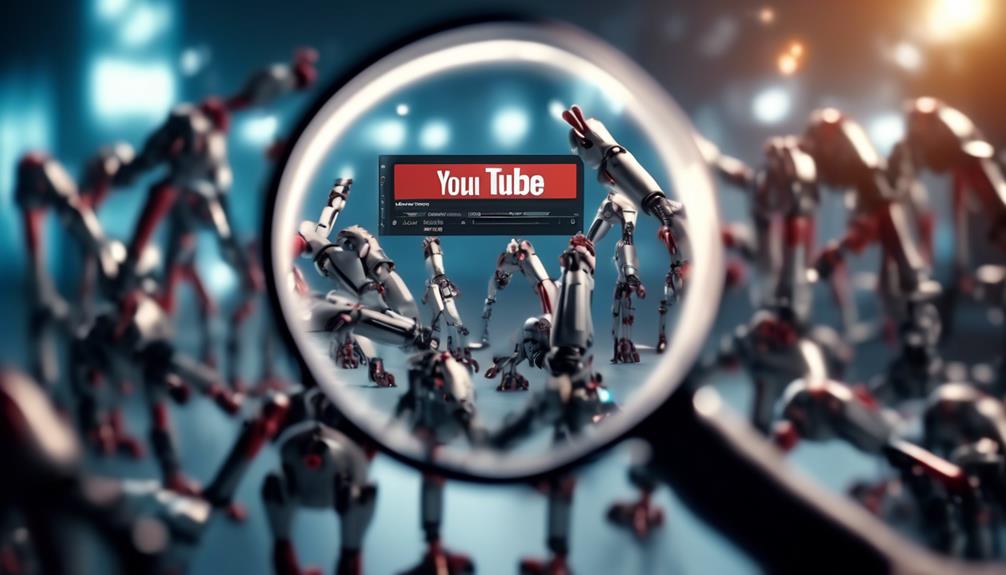
You might be wondering, what exactly are ‘fake likes’?
Simply put, they’re likes on your YouTube content generated not by genuine viewers, but by bots or purchased followers.
Understanding their impact and how to spot them is key to maintaining the integrity of your channel’s engagement metrics.
Defining Fake Likes
In the realm of digital media, ‘fake likes’ refer to illegitimate engagements on YouTube content, often generated using bots or paid services to falsely inflate a video’s popularity. The ‘like’ significance is undermined and engagement authenticity is lost. This concept can be better understood through these points:
- ‘Fake likes’ artificially boost a video’s visibility, skewing the platform’s algorithm.
- They can devalue the efforts of genuine creators who rely on authentic interactions.
- They distort the credibility of a video, misleading potential viewers about its quality or relevance.
- They pose a threat to YouTube’s ecosystem, affecting its integrity, trustworthiness and overall user experience.
Impact of Fake Likes
While it might seem harmless, the impact of fake likes on YouTube can have far-reaching consequences, disrupting the platform’s delicate balance and fair play. These deceptive practices influence the algorithm, skewing what’s popular and what isn’t.
It’s a violation of social media ethics, unfairly boosting certain content while others remain unnoticed. This manipulative strategy doesn’t just affect video rankings, but also viewer perception. It’s human nature to follow the crowd, so a video with an inflated like count can seem more appealing.
It’s important to note, however, that YouTube is continually innovating to tackle this issue. But until then, be aware that not all likes are genuine and remain critical of what you consume online.
Detecting Fake Interactions
Building on this understanding of the impact of fake likes, it’s crucial to delve into how YouTube detects such dishonest interactions. They’ve developed sophisticated algorithms to tackle social media fraud, particularly bot generated interactions.
- YouTube’s algorithm tracks user behavior patterns, flagging unnatural spikes in likes.
- They scrutinize the IP addresses, identifying multiple likes from a single source as likely fraudulent.
- The platform checks the duration between views and likes, as bots often generate likes without watching the content.
- They also analyse user engagement beyond likes such as comments and shares.
These measures help YouTube maintain authenticity and credibility. As an innovative user, you must appreciate these efforts, supporting genuine content and contributing to a healthier digital ecosystem.
Detecting Artificial User Interactions
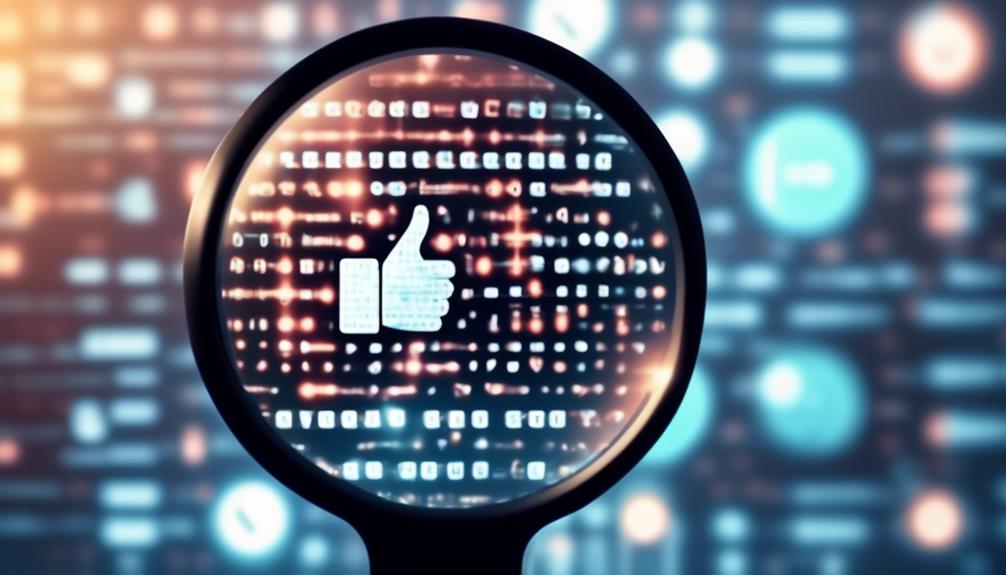
Through sophisticated algorithms, YouTube can detect and neutralize artificial user interactions, like fake likes, that don’t reflect genuine viewer engagement. This is where bot traffic analysis and social media manipulation come into play. YouTube’s system is designed to recognize patterns that suggest illegitimate activity, such as sudden spikes in likes or comments from accounts that don’t typically engage with the platform.
Fascinatingly, YouTube can distinguish between genuine user interactions and those generated by bots. It’s an ongoing battle, but one that YouTube is committed to winning to retain the integrity of their platform.
Here’s a simple table to illustrate the difference between genuine and artificial user interactions:
| Genuine User Interactions | Artificial User Interactions |
|---|---|
| Engage with content over time | Sudden engagement spikes |
| Interaction from regular accounts | Interaction from new, inactive accounts |
| Likes and comments match view count | Disproportionate likes or comments |
| Varied interaction times | Similar interaction times |
| Interaction patterns reflect human behavior | Interaction patterns resemble bot behavior |
YouTube’s Stance on Fake Engagement
Having considered how YouTube detects artificial user interactions, it’s crucial to understand the platform’s position on fake engagement. YouTube is committed to maintaining a fair and level playing field for all creators, and it’s firmly against any form of fake engagement. From a policy perspective, the platform has set strict guidelines to deter creators from resorting to such deceptive tactics.
From the creator’s perspective, it’s important to realize the implications of these policies:
- Your channel could be banned. An immediate and rather severe consequence is the potential for your channel to be permanently removed from YouTube.
- Monetization opportunities may be lost. Your ability to earn revenue from your content could be significantly impacted.
- Your credibility is at stake. Your audience could lose trust in you, leading to a possible decline in viewership and engagement.
- It can lead to legal implications. There may be potential legal consequences for violating YouTube’s terms of service.
Innovation and authenticity are key to successful content creation on YouTube. Using deceptive tactics such as buying fake likes not only goes against YouTube’s ethos, but it might also hinder your growth and success on the platform in the long run.
Consequences of Using Fake Likes
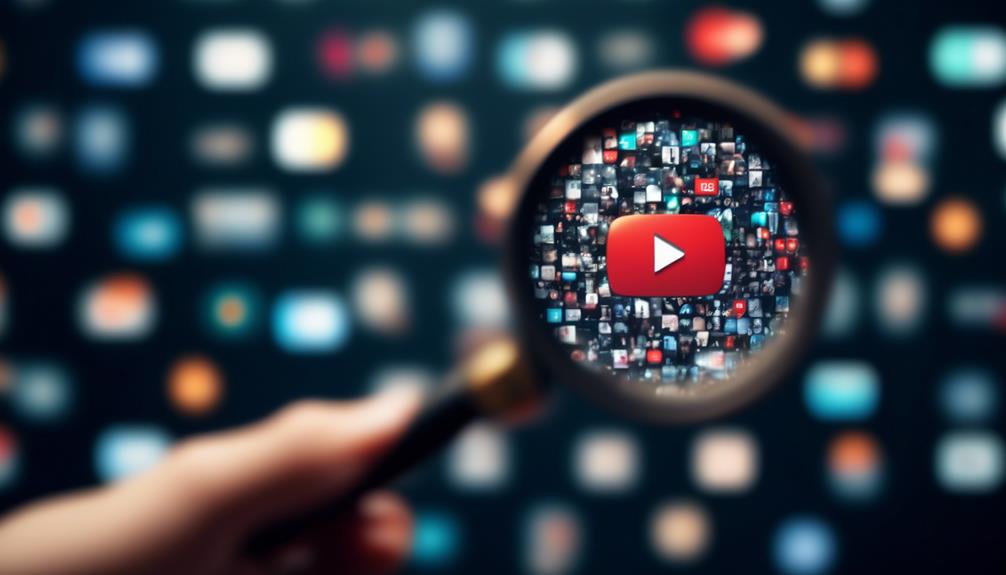
When you resort to using fake likes on YouTube, you’re stepping into a minefield of potential consequences that could significantly impact your channel and reputation. An impact analysis shows that these consequences can be vast and damaging.
Firstly, your channel could be flagged or even terminated, which could lead to a loss of content, subscribers, and future potential. This is according to YouTube’s policy implications, which strictly prohibits any form of fake engagement.
Secondly, fake likes can distort your analytics, making it difficult for you to understand your real audience’s behavior and preferences. This can hinder your ability to create content that truly resonates with your viewers, thus damaging your channel’s growth prospects.
Lastly, your reputation in the YouTube community and among advertisers could take a hit. Building a channel on fake likes can lead to mistrust and skepticism from your audience. Advertisers, too, may be less inclined to collaborate with channels that have a history of fake engagement.
Case Studies: YouTube’s Detection Capabilities
Let’s delve into specific instances that highlight YouTube’s capabilities in detecting and dealing with fake likes.
Despite detection limitations, YouTube has made strides in fighting counterfeit metrics. In one case, a popular YouTuber saw a sudden, unexplained increase in likes. YouTube’s detection system flagged this anomaly, resulting in a thorough investigation and eventual removal of the fraudulent likes.
In another instance, a music video experienced an influx of likes within minutes of its release, far surpassing the views. This incongruity triggered YouTube’s alert system, leading to the discovery and deletion of bot-generated likes.
Consider these points to understand YouTube’s robust detection mechanism:
- YouTube’s algorithm is continually being refined to combat fake likes more effectively.
- Anomalies in like-to-view ratios can alert YouTube to potential counterfeit metrics.
- The platform’s detection systems can identify sudden spikes in likes, often indicative of fake engagement.
- YouTube has the ability to trace likes back to their source, aiding in identifying and removing bot-generated likes.
These case studies demonstrate YouTube’s dedication to maintaining the integrity of its platform. Nevertheless, the fight against fake likes is ongoing, requiring innovative solutions to keep pace with evolving tactics of fraudsters.
How to Spot Fake Likes
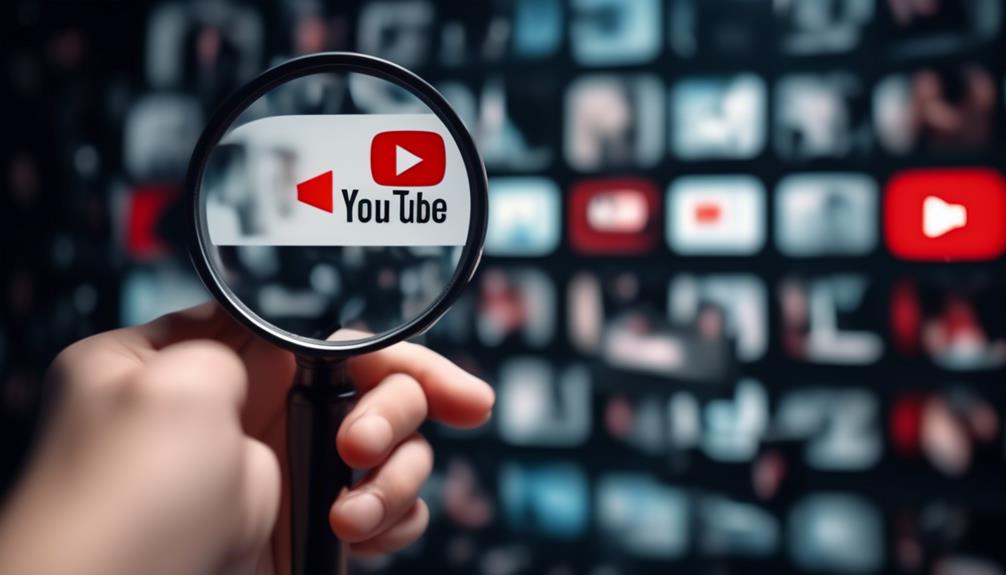
While YouTube’s detection systems are robust, it’s also crucial to equip yourself with the knowledge to discern real engagement from fake likes. The like inflation consequences can be detrimental to the platform’s credibility and your channel’s reputation. So, how do you spot these bot-generated likes?
Firstly, examine the likes-to-comments ratio. If a video has a high number of likes but few comments, it’s likely the likes are inauthentic. Real engagement often results in comments, shares, and other forms of interaction. With fake likes, this interaction is missing.
Secondly, watch out for sudden spikes in likes. If a video has been getting a steady stream of likes and then suddenly receives a large influx, it could be a sign of bot activity. Real likes tend to increase more gradually.
Lastly, consider the user profiles behind the likes. If they lack profile pictures, have no uploaded content, or have generic usernames, they might be bots. Bots often have minimal personal information, as they’re created en masse for the sole purpose of inflating likes.
Understanding these signs will help you navigate YouTube’s landscape more effectively, preserving the integrity of your content and safeguarding against the repercussions of fake engagement.
Promoting Authentic YouTube Engagement
Fostering authentic engagement on your YouTube channel not only boosts your credibility but also escalates your content’s visibility and reach. When you engage genuinely with your audience, your ‘Authenticity Metrics’ shoot up, thereby increasing your viewer retention rates.
Here’s how you can promote authentic YouTube engagement:
- Regularly interact with your viewers by responding to their comments.
- Encourage your audience to share their opinions and ideas about your content.
- Organize live chats or Q&A sessions to create a direct dialogue with your viewers.
- Consistently deliver high-quality, valuable, and relatable content.
Viewer retention is paramount as it directly influences your channel’s growth and profitability. Ensure your content is engaging enough to keep viewers hooked until the end and prompt them to return for more.
This cyclical interaction fosters an authentic relationship between you and your audience, resulting in a positive impact on your Authenticity Metrics.

